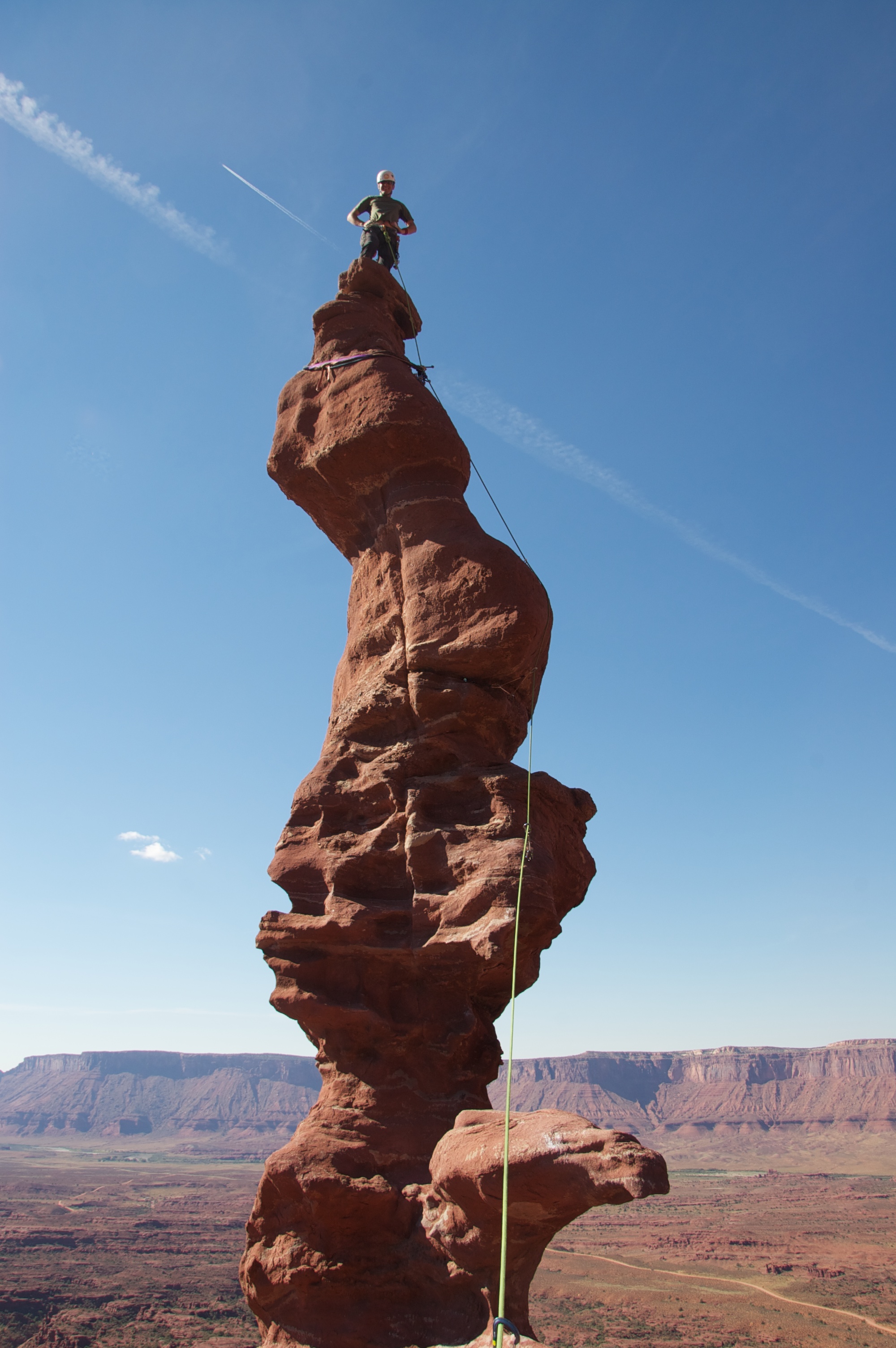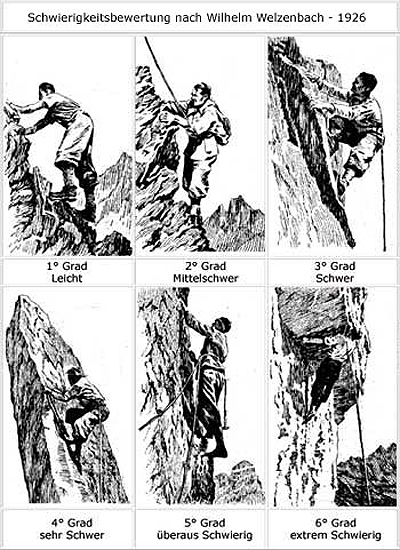|
Biberkopf
The Biberkopf is a 2,599 m high mountain in the Alps on the border between Germany and Austria. Location and area The Biberkopf lies on the main crest of the Allgäu Alps on the border between the Bavarian district of Oberallgäu and the Tyrolean district of Reutte. It is around 15.5 km south-southwest of Oberstdorf and only about 2.5 km east of the Schrofen Pass. The ''Biberkopf'' is sometimes described as the most southerly point in Bavaria and Germany, although its summit lies 110 metres further north than the Haldenwanger Eck, 4,088 metres to the west. Geology Its fascinating shape makes the ''Biberkopf'' (literally: "beaver's head") one of the most striking mountains in the German Alps. Geologically the body of the summit is made of severely folded dolomite that was thrust up over marls. The very pure dolomite is the reason for the lack of vegetations on the mountain, because the content of clay minerals in the weathering products is insufficient for the ... [...More Info...] [...Related Items...] OR: [Wikipedia] [Google] [Baidu] |
Rappensee Hut
The Rappensee Hut (german: Rappenseehütte) is an Alpine Club hut belonging to the Allgäu-Kempten Section of the German Alpine Club. With 304 bedspaces it is the largest of all the 327 huts of the German Alpine Club. It received a record number of guests on 19 September 1970 with 681 people overnighting. On average the hut has about 15,000 overnight stays per year. Location The Category 1 hut is situated in the Allgäu Alps in southern Germany, a few kilometres south of Oberstdorf on a grassy terrace near the lakes of Little and Great Rappensee. The most important summits in the vicinity are the Biberkopf and Hohes Licht. The well known Heilbronn Way begins and ends to the east and above the Rappensee Hut. History The Rappensee Hut was built in 1885. After several extensions it has become the largest hut in the German Alpine Club. In August 2009 after drinking water over 100 guests at the hut complained of gastroenteritis and circulatory problems and some had to be ev ... [...More Info...] [...Related Items...] OR: [Wikipedia] [Google] [Baidu] |
Allgäu Alps
The Allgäu Alps (german: Allgäuer Alpen) are a mountain range in the Northern Limestone Alps, located in Bavaria and Baden-Württemberg in Germany and Tyrol and Vorarlberg in Austria. The range lies directly east of Lake Constance. Character The mountain range is characterised by an unusual variety of rock formations and consequently a rich tapestry of landscapes, in particular, the steep "grass mountains" (''Grasberge'') of the Allgäu Alps with gradients of up to 70°. Its flora is amongst the most varied in the whole Alpine region and its accessibility by lifts and paths is outstanding. The mountain paths (''Höhenwege'') running from hut to hut are well known and hikers can spend seven to ten days walking in the mountains without descending to inhabited valleys. Thanks to its location on the northern edge of the Alps, the region has relatively high precipitation and is the rainiest in Germany. In winter the Allgäu Alps – at least in the higher regions – are comparati ... [...More Info...] [...Related Items...] OR: [Wikipedia] [Google] [Baidu] |
Hohes Licht
The Hohes Licht, at 2,651 metres, is the second highest mountain in the Allgäu Alps after the Großer Krottenkopf. Its summit lies in the Austrian state of Tyrol. Location The mountain lies 4½ kilometres as the crow flies north-northwest of Steeg in the Lech valley and 14 kilometres south of Oberstdorf. Neighbouring peaks are, to the northeast the Wilder Mann, the Bockkarkopf, the Hochfrottspitze and the Mädelegabel. To the south are the Peischelspitze and the Ellbognerspitze, to the west the Hochgundspitze and the Hochrappenkopf. To the northwest lies the 200 metre lower Rotgundspitze. First climb In 1854, during a triangulation exercise, a "survey signal" (''Vermessungssignal'') was erected. When the mountain was first climbed for leisure purposes by Hermann von Barth on 6 August 1869, the signal was still there. Barth reached the summit approaching from the Biberkopf via the ''Hochalpe'' and the ''Steinscharte'' from the northwest.Anton Spiehler in Eduard Richter: ... [...More Info...] [...Related Items...] OR: [Wikipedia] [Google] [Baidu] |
Warth (Vorarlberg)
Warth is a municipality in the district of Bregenz in the Austrian state of Vorarlberg Vorarlberg ( , ; gsw, label= Vorarlbergisch, Vorarlbearg, , or ) is the westernmost state () of Austria. It has the second-smallest geographical area after Vienna and, although it also has the second-smallest population, it is the state with the .... Population References Cities and towns in Bregenz District {{Vorarlberg-geo-stub ... [...More Info...] [...Related Items...] OR: [Wikipedia] [Google] [Baidu] |
Exposure (heights)
Exposure is a climbing and hiking term. Sections of a hiking path or climbing route are described as "exposed" if there is a high risk of injury in the event of a fall because of the steepness of the terrain. If such routes are negotiated without any protection, a false step can result in a serious fall. The negotiation of such routes can cause fear of falling because of the potential danger. Definitions What constitutes exposure on a path is fairly obvious, however, an "exposed" location or section of a climbing route is not uniformly or clearly defined in the literature. There are no threshold values, for example, based on the gradient of the terrain, the height of rock faces or the character of a ridge or arête. Authors tend to use their own definition of the terms "exposure" or "exposed" when describing routes, for example: Exposure * "''The distance from the climber to where the climber would likely stop in the event of an unprotected fall.''" * "''Being very far abov ... [...More Info...] [...Related Items...] OR: [Wikipedia] [Google] [Baidu] |
Sure-footedness
Sure-footedness is the ability, especially when hiking or mountain climbing, to negotiate difficult or rough terrain safely. Such situations place demands on a person's coordination and reserves of strength as well as requiring sufficient appreciation of the terrain. A person who is sure-footed is thus unlikely to slip or stumble, and will have a good head for heights when required. On many hiking trails and mountain tours, sure-footedness is assumed to be a prerequisite without ever being defined. The term is frequently used in the literature presumably to ensure that the reader is made sufficiently aware that, under certain circumstances, one false step may lead to serious consequences. Required attributes Although there is no standard definition of sure-footedness, [...More Info...] [...Related Items...] OR: [Wikipedia] [Google] [Baidu] |
Grade (climbing)
In rock climbing, mountaineering, and other climbing disciplines, climbers give a grade to a climbing route or boulder problem, intended to describe concisely the difficulty and danger of climbing it. Different types of climbing (such as sport climbing, bouldering or ice climbing) each have their own grading systems, and many nationalities developed their own, distinctive grading systems. There are a number of factors that contribute to the difficulty of a climb, including the technical difficulty of the moves, the strength, stamina and level of commitment required, and the difficulty of protecting the climber. Different grading systems consider these factors in different ways, so no two grading systems have an exact one-to-one correspondence. Climbing grades are inherently subjective.Reynolds Sagar, Heather, 2007, ''Climbing your best: training to maximize your performance'', Stackpole Books, UK, 9. They may be the opinion of one or a few climbers, often the first ascensi ... [...More Info...] [...Related Items...] OR: [Wikipedia] [Google] [Baidu] |
German Alpine Club
The German Alpine Club (german: links=no, Deutscher Alpenverein, DAV for short) is the world's largest climbing association and the eighth-largest sporting association in Germany. It is a member of the German Olympic Sports Confederation and the competent body for sport and competition climbing, hiking, mountaineering, hill walking, ice climbing, mountain expeditions, as well as ski mountaineering. It is an association made up of local branches known as 'sections'. History The German Alpine Club was founded as on 9 May 1869 in Munich by 36 former members of the Austrian Alpine Club around the Ötztal curate Franz Senn. It was founded in order to promote the development of tourism in the Eastern Alps through the building of mountain huts, and establishment of hiking trails, and via ferratas. The association had a large membership from the beginning, attracting 1,070 members in the first ten months. The German and the Austrian societies merged in 1873 to form the Germa ... [...More Info...] [...Related Items...] OR: [Wikipedia] [Google] [Baidu] |
Section (Alpine Club)
The section (german: Sektion) of an Alpine club (or that of any such Alpine society or association) is an independent club or society that, together with the other sections, forms the main organisation ("Alpine club"). Membership of an Alpine club is normally only possible through membership of a section. The task of an Alpine club section is the maintenance of tradition and culture, the Alpine training of its members, the planning and implementation of mountain tours and expeditions, and also the maintenance of huts and trails in the mountains. Many sections own Alpine club huts. After the initial task of the Alpine clubs - i.e. the development of the Alps for tourism and Alpinism, was considered as largely completed in Central Europe today, the work of the sections moved increasingly into the service sector, including the organization of Alpine courses and tours as well as sponsoring climbing gyms. *The German Alpine Club consists of 354 legally independent sections with a tota ... [...More Info...] [...Related Items...] OR: [Wikipedia] [Google] [Baidu] |
Mindelheim Hut
Mindelheim (; Swabian: ''Mindelhoi'') is a town in Swabia, Bavaria, Germany. The town is the capital of the Unterallgäu district. At various points in history it was the chief settlement of an eponymous state. Geography Mindelheim is located on the river Mindel, about west of the Bavarian capital of Munich. Other towns nearby are Memmingen and the health resorts of Bad Grönenbach, Ottobeuren and Bad Wörishofen. Mindelheim is located close to the Autobahn 96 leading from Munich to Lindau. Furthermore, Mindelheim station is on the Buchloe–Memmingen railway, which connects to Zürich via Memmingen and Lindau and to Munich via Buchloe, and the Central Swabian Railway (''Mittelschwabenbahn''), which connects to Günzburg via Krumbach. History In 1365, the Dukes of Teck-Owen came into the possession of Mindelheim but had to sell their heritage around the castle Teck to the Counts of Württemberg. The last member of that line, Louis of Teck, Patriarch of Aquileia ... [...More Info...] [...Related Items...] OR: [Wikipedia] [Google] [Baidu] |
Marl
Marl is an earthy material rich in carbonate minerals, clays, and silt. When hardened into rock, this becomes marlstone. It is formed in marine or freshwater environments, often through the activities of algae. Marl makes up the lower part of the cliffs of Dover, and the Channel Tunnel follows these marl layers between France and the United Kingdom. Marl is also a common sediment in post-glacial lakes, such as the marl ponds of the northeastern United States. Marl has been used as a soil conditioner and neutralizing agent for acid soil and in the manufacture of cement. Description Marl or marlstone is a carbonate-rich mud or mudstone which contains variable amounts of clays and silt. The term was originally loosely applied to a variety of materials, most of which occur as loose, earthy deposits consisting chiefly of an intimate mixture of clay and calcium carbonate, formed under freshwater conditions. These typically contain 35–65% clay and 65–35% carbonate. The te ... [...More Info...] [...Related Items...] OR: [Wikipedia] [Google] [Baidu] |
Kleiner Rappenkopf
Kleiner Rappenkopf is a mountain of Bavaria, Germany Germany,, officially the Federal Republic of Germany, is a country in Central Europe. It is the second most populous country in Europe after Russia, and the most populous member state of the European Union. Germany is situated betwe .... Mountains of Bavaria Mountains of the Alps {{Bavaria-geo-stub ... [...More Info...] [...Related Items...] OR: [Wikipedia] [Google] [Baidu] |




